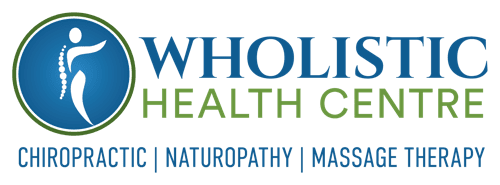For centuries, the idea of maintaining a perfect, upright ideal posture has been widely regarded as an essential safeguard against chronic pain. However, recent research in the world of health and science has challenged these traditional perceptions. Is the longstanding advice tying poor posture to chronic pain due for a reevaluation?
The tradition of ideal posture
The connection between being a slouch and bad health has long been widely accepted. It dates back to as early as the Ancient Greeks, who postulated that the upright nature of humans was a symbol of intelligence and morality. In the 16th century, straight and erect postures were first adopted for military drills. Ever since these times, the simple idea that standing or sitting in awkward positions could lead to poor health, poor character and chronic pain has been popular throughout society. This belief influenced various aspects of daily life, from how we sit at desks to the design of ergonomic furniture.
Straightening the record
Recent research has introduced a paradigm shift, challenging the notion that posture alone is the largest factor influencing chronic pain. This 2016 analysis of 10 different studies was not able to confirm a strong link between slouching and shoulder pain. It’s possible that while posture might contribute to chronic pain, its significance is not as all-encompassing as once believed.
Another recent discovery is that what constitutes optimal posture for one person may not be universally beneficial for another. A 2009 study featuring participants with lower back pain found that the classic ‘good’ posture that brought relief for roughly half the group, could actually worsen pain for an equal number of the others. This leads us to a crucial understanding: The notion that there is a single best posture for everyone, regardless of their body size, shape, or daily activities in their routine can be misleading and possibly harmful.
When is posture still important?
While the best posture for each person may not always look the same, it’s still useful to be mindful of having a neutral spine whenever possible, and to keep your muscle and joints aligned, which can help to put your body under a minimum of fatigue and stress. That’s why the conventional wisdom of good posture remains an important piece of the puzzle when it comes to solving chronic pain.
What does efficient posture look like?
- Keep your spine in alignment with your head and your limbs.
- Keep your work straight in front of you so that you don’t have to tilt your neck up or down.
- Keep your ears in line with your shoulders, to ensure your head isn’t leaning forward.
- Your shoulders should be in the middle of their sockets, rather than being rounded forwards.
- Your weight should be evenly spread out between both hips and your feet, which usually means your feet should be flat on the floor rather than crossed or hanging.
It’s important to note that sitting or standing in any static position for long periods, whether that position is slouching or rigidly concentrating on maintaining the best posture, can put strain on your joints. Therefore, it’s not the concept of optimal posture, which is inherently harmful, but when people pay too much attention to keeping perfect posture over all other solutions, which may become counterproductive and fail to solve the issue of their daily soreness.
Staying dynamic
People did not evolve to be sedentary for long periods. While maintaining efficient posture can play a role in reducing muscle strain, staying dynamic through movement and exercise can be just as important to preventing chronic pain.
Dynamic posture
Change your sitting or standing poses regularly throughout the day, as often as possible. This helps prevent stiffness and promotes blood circulation, reducing the risk of chronic pain associated with prolonged periods of immobility. A good rule of thumb is to change position or stand up every 30 minutes you have been at a desk.
Exercise and stretching breaks
Engaging in stretches and short bursts of exercise each day can give a big boost in helping to maintain joint flexibility, muscle strength, and overall physical well-being. If you take part in at least 30 minutes of exercise each day, you’ll bolster your health, and mood, and address underlying issues that may be contributing to chronic pain.
Professional intervention
While movement and exercise are integral components of a daily routine, there’s another crucial aspect to pain-free living, which is the expertise of allied health professionals such as our team at Wholistic Health Centre. For any kinds of pain or imbalances which individuals can’t manage themselves, chiropractors, massage therapists, and other healthcare professionals are also here to lend a hand.
Chiropractic care: Chiropractors specialise in assessing and correcting misalignments in the spine, providing adjustments that alleviate pain, improve joint function, and enhance overall well-being.
Massage therapy: Massage therapy can release the muscle tension built up from chronic pain and other musculoskeletal issues, improving blood circulation and restoring function to the affected areas, which gives the body its best chance to heal.
Tailored treatment plans: Each person’s body has different pains and weaknesses, and we all lead daily lives with varying physical demands. If you get the help of a professional to tailor your treatment program to your own individual needs and capabilities, you’ll ensure that your body is rehabilitated and strengthened in a way that promotes overall health, resilience, and pain prevention.
The changing understanding of chronic pain challenges the age-old wisdom that posture alone is the biggest factor of all when it comes to musculoskeletal health. While maintaining an efficient posture can still play a role in reducing muscle strain, the emphasis has shifted away from a single standard of best posture. Adopting dynamic movement, regular exercise, and professional interventions may play more pivotal roles in maintaining a pain-free, vibrant life. So, let go of trying to keep up that upright posture all day, and celebrate a more holistic approach towards well-being and resilience.



